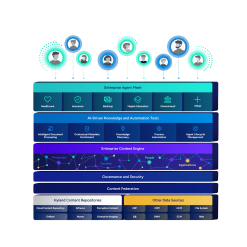Story highlights
About FAA: A U.S. government agency that modernized its IT infrastructure to deliver high-quality solutions faster and more efficiently across the organization.
Hyland product: Alfresco
Major wins:
- Established an enterprise-wide shared document management service (EDMS) to meet diverse business needs.
- Reduced IT expenses and gained more value by consolidating multiple vendor contracts into a single enterprise license agreement.
- Onboarded the first customer to the new platform in just two days, demonstrating rapid, efficient implementation.
- Created a holistic cost model for effective financial and budgetary planning, providing data-backed confidence for service decisions.
For government agencies, IT shared services are a proven strategy for delivering high-quality solutions faster and more efficiently. Case in point: The Federal Aviation Administration’s (FAA) shared enterprise document management service (EDMS), under FAA's Office of Information and Technology (AIT) organization, was built with broad enterprise consumption, economies of scale and cost and time savings in mind.
Powered by Alfresco, EDMS embodies the IT shared services vision.
"EDMS is a shared service to help the agency's business partners plan for and satisfy their business needs. This success is attributed to an early focus on end-to-end service planning, governance and standardization with an eye towards enterprise adoption,” said Carmen Marco, SVP of digital experience services at professional services firm Network Designs, Inc. (NDi).














